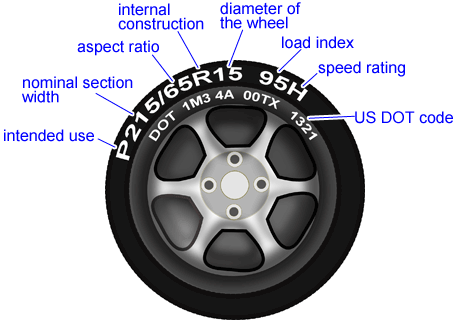Wheels and tires are essential components of any vehicle, and choosing the right size is crucial for ensuring a comfortable ride and safe driving experience. A wrong size can lead to problems like reduced fuel efficiency, uneven wear and tear, and even affect handling. In this article, we will explore the basics of car wheel and tyre fitment, and help you understand how to choose the perfect fitment for your vehicle.
What Is Wheel And Tyre Size?
Wheel and tire size refers to the diameter and width of the tire, as well as the diameter and width of the wheel that it fits on. The size is usually represented by a series of numbers and letters on the sidewall of the tire. For example, a tire size of 225/45 R17 91W represents a tire that is 225 millimeters wide, has a profile height of 45% of the width, fits a 17-inch diameter wheel, and has a speed rating of 91W (maximum speed of 168 km/h).
Why Is It Important To Choose The Right Wheel And Tyre Size?
Choosing the right wheel and tire size is essential for several reasons:
- Comfort: The right size ensures a smooth and comfortable ride, as it reduces road noise, vibrations, and bumps.
- Safety: An incorrect size can affect the handling of your vehicle and make it more difficult to control in emergencies.
- Performance: The right size can improve acceleration, braking, and overall handling, as well as increase fuel efficiency.
- Appearance: The right size can enhance the overall look of your vehicle and improve its visual appeal.
How To Choose The Right Wheel And Tyre Size?
There are several factors to consider when choosing the right wheel and tire size for your vehicle:
- Vehicle Manufacturer’s Recommendations: The first step is to check the vehicle manufacturer’s recommendations. This information can be found in the owner’s manual, or on the vehicle’s tire information placard, usually located in the door jamb or inside the fuel filler flap.
- Tyre Profile Height: The profile height refers to the height of the tire sidewall, and is expressed as a percentage of the width. A low-profile tire has a smaller profile height and provides better handling, but also has a harsher ride. A high-profile tire has a taller profile height and provides a smoother ride, but can affect handling and performance.
- Wheel Diameter: The wheel diameter refers to the size of the wheel, and is measured in inches. It is important to choose a wheel diameter that is compatible with your vehicle’s suspension and braking system.
- Load Rating: The load rating refers to the maximum weight a tire can safely carry. It is important to choose a tire with the right load rating for your vehicle, as it affects the handling, performance, and overall safety of your car.
- Speed Rating: The speed rating refers to the maximum speed that a tire can safely handle. It is important to choose a tire with the right speed rating for your vehicle, as it affects the handling, performance, and overall safety of your vehicle.
- Compatibility With Sensors: If your vehicle is equipped with sensors, it is important to choose a wheel and tire size that is compatible with the sensors. This ensures that the sensors work properly and provide accurate readings.
- Overall Style: The final factor to consider is the overall style of the wheel and tire. It is important to choose a style that is compatible with the overall look of your vehicle, and that enhances its visual appeal.
